Slippery Jack
This slimy topped mushroom is common to Pine plantations and can usually be found close to paths in late Summer and Autumn. One of the few Bolete species to have a skirt.
| Mushroom Type | |
| Common Names | Slippery Jack (EN), Boleg Llithrig (CY), Maślak Zwyczajny (PL), Barna Gyűrűstinóru (HU) |
| Scientific Name | Boletus / Suillus luteus |
| Season Start | Aug |
| Season End | Sep |
| Average Mushroom height (CM) | 5-9 |
| Average Cap width (CM) | 5-12 |
Cap
5-12 cm long, 2-3 cm diameter. Dark brown to purple/brown with a very glutinous cap when wet, more rusty brown when dry. Starting convex and broadly flattening with age.
Pores
The pores are round, tightly packed and lemon yellow to dull yellow. When young they are covered by a veil which will break free from the cap forming the skirt.
Stem
5-9cm. Off white to yellow, more yellow above the skirt and covered in small brown granular spots.
Skirt
Thick and white underneath, brown above from the dropping spores, on older mushrooms the underside can become pale lavender coloured or the whole ring can become just a mark on the stem.
Possible Confusion
The Larch Bolete (Suillus grevillei) can look similar but is more orange/yellow. A Larch Bolete variant (Suillus grevillei var. badius) is darker capped but also has a darker stem not the off white stem of Slippery Jack.
Spore Print
Brown. Subfusiform. The image is of the upper surface of the skirt where it has caught some dropping spores.
Frequency
Common with pine.
Other Facts
It has been reported that the slimy skin on the cap can cause adverse reactions in some people so is best removed before cooking.



 (27 votes, average: 3.89 out of 5)
(27 votes, average: 3.89 out of 5)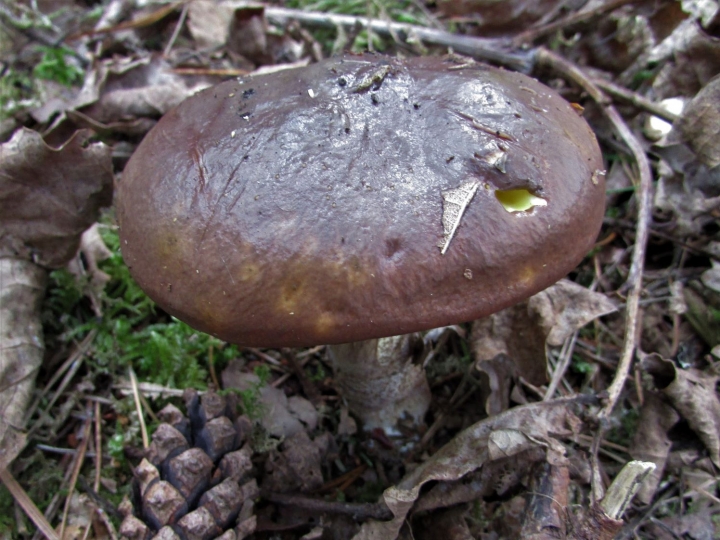
















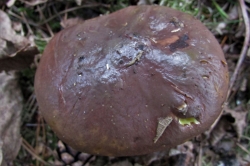
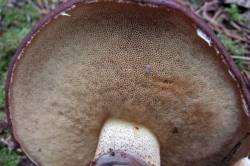
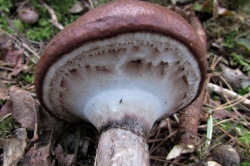
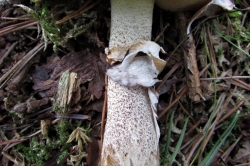
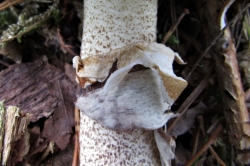
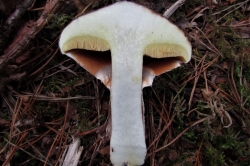
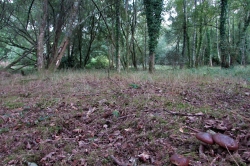
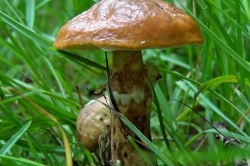
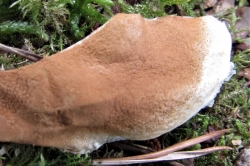





3 comments for Slippery Jack
Its about the slime that covers the cap, its hard to digest and some people can have gastric issues. Thats why its advised to remove the skin. You may also scratch some of the slime with knife ( need to scratch them off grass and dirt anyway) and soak mushrooms for few hours in very salty water to dissolve rest of it. Then a few good washes. Some people simmer them for few minutes as last stage. This way you can keep the skin, so they look better in a dish, but most importantly you dont have to sit and peel them one by one. Which due to slippery nature of this mushroom is quite annoying job.
They make great sauce when cooked with butter and some onions.
I woke up this morning with my yard overgrown with these yellow slippery mushrooms. I picked 5 shovels full not knowing how f the would harm my dogs.
The skin comes off these really easily: hold the mushroom with stalk towards you then break the cap gently in two away from you. You’ll find that the skin doesn’t quite break, so then you can easily peel the broken cap away from the skin.